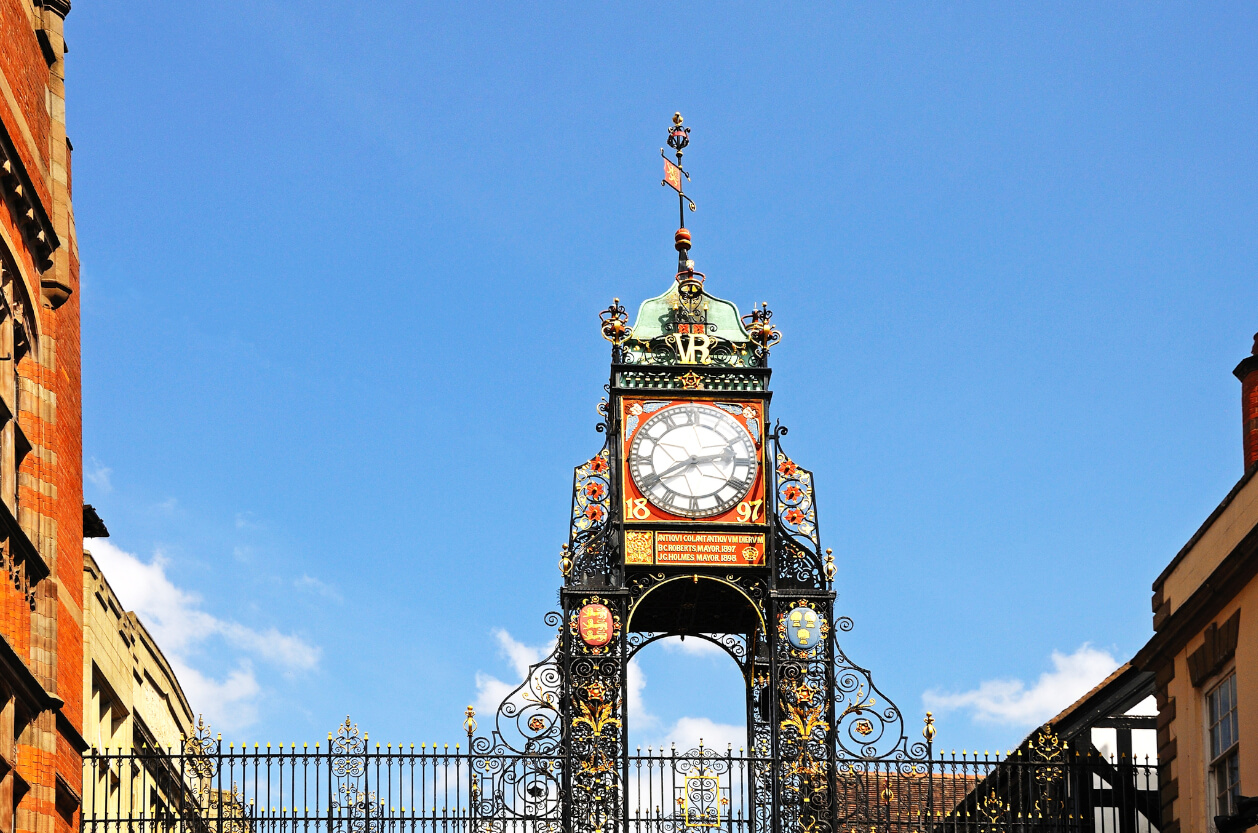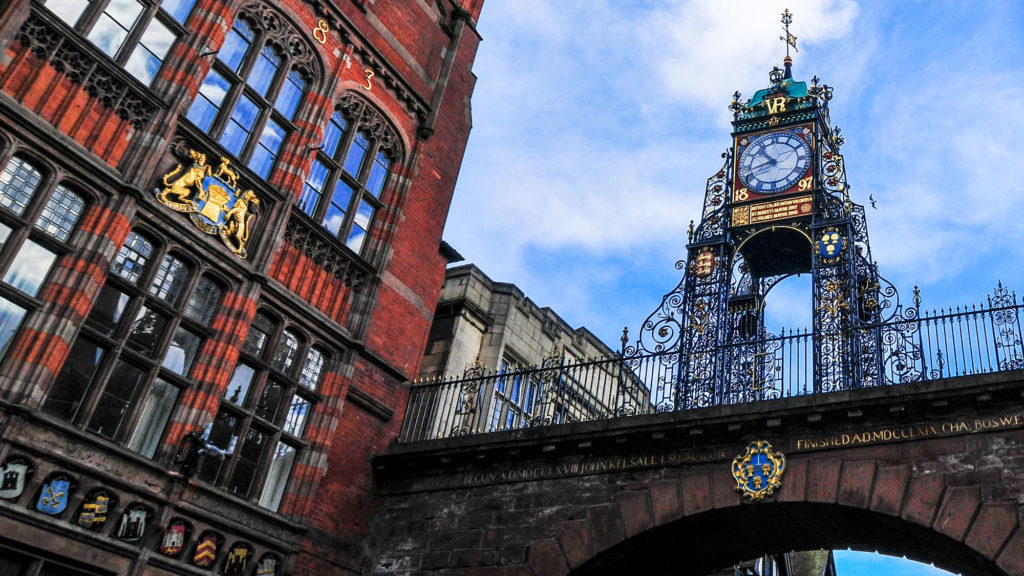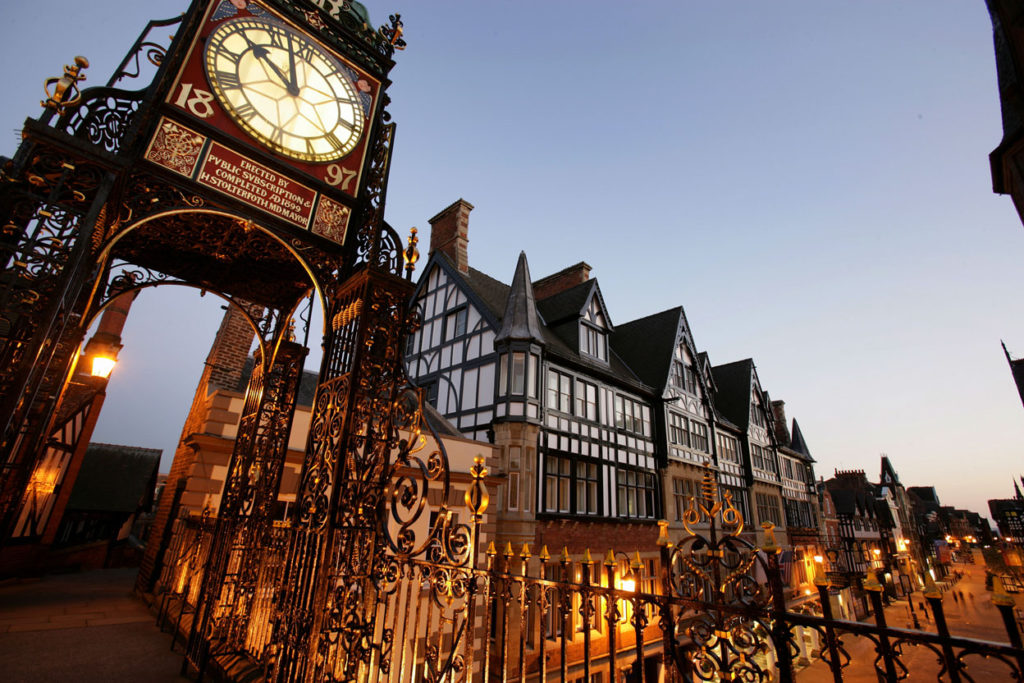Chester, a picturesque city in the northwest of England, is renowned for its rich history and stunning architecture.
Among its many treasures, the Eastgate Clock stands out as a prominent symbol of Chester’s heritage.
This iconic clock tower, perched above the Eastgate, offers visitors a glimpse into the city’s past while providing a striking feature in the present.
In this guide, we’ll explore the Eastgate Clock’s history, design, visitor experience, and cultural significance, making it a must-see for anyone visiting Chester.
History of the Eastgate Clock

The Eastgate Clock was erected in 1897 as a tribute from local businessman Charles Brown, who wanted to commemorate Queen Victoria’s Diamond Jubilee.
Designed by renowned architect John Douglas, the clock blends Gothic Revival and Victorian architectural styles, reflecting the prevalent trends of the late 19th century.
The clock’s construction involved meticulous craftsmanship, with intricate stone carvings and ornate detailing that highlight Douglas’s design expertise.
The clock tower’s mechanism, featuring a system of weights and pulleys, was state-of-the-art for its time.
Despite undergoing several restorations to preserve its functionality and appearance, the clock remains a testament to the engineering ingenuity of its era.
Over the years, the Eastgate Clock has become an enduring symbol of Chester’s enduring charm.
The Clock’s Design and Features

Standing at an impressive 35 feet tall, the Eastgate Clock commands attention with its grandeur.
The clock’s mechanism, once powered by a system of weights and pulleys, continues to chime every hour, marking the passage of time with historical significance.
One unique aspect of the Eastgate Clock is its three faces.
While most clocks feature four faces, the Eastgate Clock’s design includes three, possibly due to its positioning and the architectural constraints of the time.
This distinctive feature, combined with its ornate design, makes the clock a favourite among photographers and history enthusiasts alike.
Visiting the Eastgate Clock
Located centrally in Chester, the Eastgate Clock is easily accessible for visitors on foot or by public transport.
The clock’s prime location means it is conveniently close to other notable attractions, such as Chester Cathedral and the Roman Amphitheatre.
A visit to the Eastgate Clock can be seamlessly integrated into a broader exploration of Chester’s historic sites.
For those seeking a closer view, there are opportunities to climb the stairs to the top of the clock tower, offering panoramic vistas of Chester and its surroundings.
The climb is well worth the effort for the breathtaking views and the chance to appreciate the clock’s design up close.
Cultural Significance

The Eastgate Clock is more than just a timepiece; it’s a cultural landmark that has been central to Chester’s community life.
The clock has been the focal point for various celebrations, including New Year’s Eve festivities and historical reenactments.
Its hourly chimes are an integral part of the city’s ambience, evoking a sense of tradition and continuity.
The clock’s presence has also inspired numerous local stories and legends, further embedding it into the fabric of Chester’s cultural identity.
Its role in public events and daily life underscores its significance beyond its architectural and historical value.
Tips for Visitors
- Best Time to Visit: The Eastgate Clock is accessible throughout the year. However, the summer months provide the best visibility and the most pleasant weather for exploring the city and its attractions.
- Accessibility: The clock tower is equipped with ramps and lifts to accommodate visitors with disabilities, making it accessible to everyone.
- Nearby Attractions: Enhance your visit by exploring nearby attractions such as the scenic River Dee or the fascinating Grosvenor Museum, which offer additional insights into Chester’s history and culture.
Conclusion
The Eastgate Clock is a quintessential part of Chester’s historical and architectural landscape.
Its striking design, rich history, and cultural significance make it an essential destination for visitors to the city.
Whether you are a history aficionado, a keen photographer, or simply a curious traveller, the Eastgate Clock promises to leave a lasting impression with its timeless charm and historical depth.
Chester Tourism FAQs
What is the history of the Eastgate Clock in Chester?
The Eastgate Clock, constructed between 1768 and 1769, was a significant addition to Chester’s historical landscape.
What is the most photographed clock in the UK?
The Eastgate Clock is often considered one of the most photographed clocks in the UK, second only to Big Ben. Its unique design and historical importance make it a popular subject for photographers and tourists alike.
Why does the Chester clock only have three faces?
The Eastgate Clock features three faces rather than the usual four. This design choice likely reflects both the architectural style of the time and the specific purpose and positioning of the clock.

